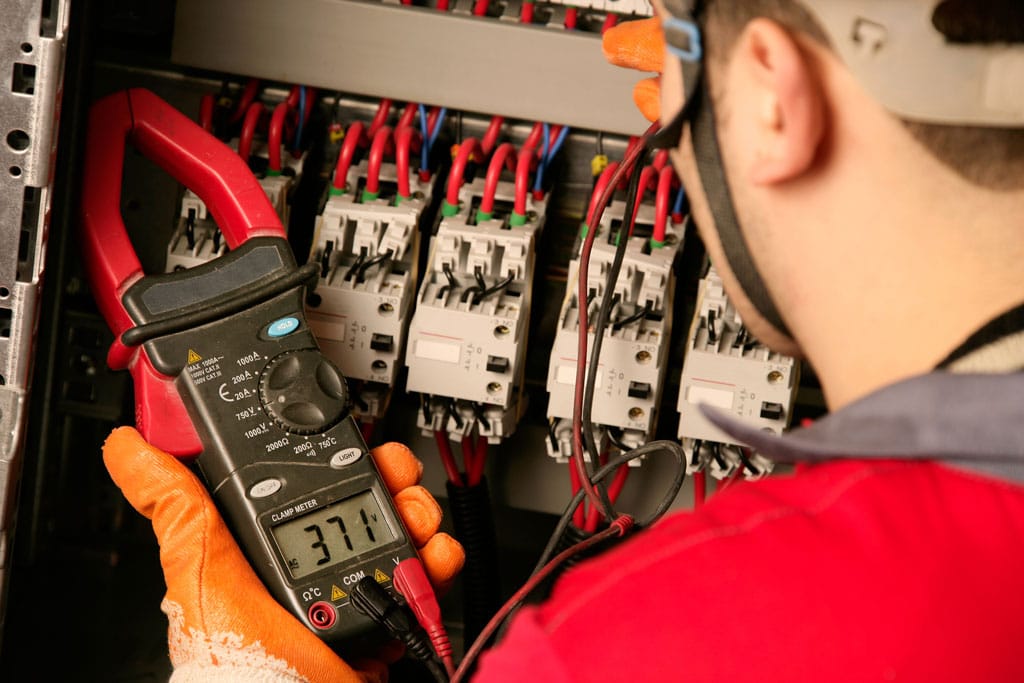Rewiring a house can be daunting, but it is essential for the safety and reliability of your Flower Mound, TX home’s electrical system. Knowing what to expect when you hire an electrician for the process can help you prepare for surprises or potential problems. Let’s take a look at what rewiring entails.
The Basics of Rewiring
Rewiring involves replacing old wiring, outlets, switches, and fixtures with new ones that meet current safety standards. This process should always be done by a licensed electrician in Flower Mound, TX who understands the complexities of wiring and knows how to install it properly. It’s important to note that rewiring is not just about replacing old wiring with new; it also involves considering how all pieces fit together to ensure everything works correctly.
The Process
Assess Your Current Electrical System
The first step in any rewiring project is to assess your current electrical system. You need to identify any existing problems with your wiring, such as outdated wiring or potential hazards. You should also determine whether you need additional outlets or switches and where they should go. This assessment ensures that your new wiring meets all safety and code requirements.
Planning and Preparation
Before starting the rewiring process, the electrician will need to plan out the new wiring layout and obtain the necessary permits. This planning and preparation phase is critical to ensuring the safety of those working on the project. If the electrical services provider you hire skips this step, it is best to find another. You should also ensure that the electrical professional you hire is properly licensed and insured for your protection. Before any work can be done, the power to the home must be shut off. This is typically done by turning off the main circuit breaker or fuse at the electrical panel.
Removing Old Wiring
Once the power is shut off, the electrician will begin to remove any existing wiring that needs to be replaced. This includes removing light fixtures, switches, and outlets from the walls. The electrical professional may also need to remove old insulation around electrical wires and drill holes for new wiring or other installations. This part of the process is time-consuming and requires care to avoid damaging walls, floors, or other areas.
Run New Wires
The next step is to run new wires throughout your home. Depending on the type of wiring used, this may involve running conduits through walls, ceilings, and floors. All wires should be installed according to local codes and standards for safety purposes. Check these standards before beginning any work, as they vary from state to state. However, when you hire a professional electrical services provider in Flower Mound, TX, you don’t have to worry about this as they will know the Texas regulations.
Install New Fixtures and Outlets
Once the new wiring is in place, the electrician can install any new fixtures or outlets. This process includes mounting special boxes for electrical switches and outlets and installing light fixtures. Based on the electrician’s recommendations during the assessment process, additional outlets may be needed in certain areas of your home. The plan they created will also be crucial to ensure the wiring is properly connected and secure.
Install Grounded Electrical Outlets
After all the components have been wired up correctly, it’s time to install grounded electrical outlets throughout your home. This ensures that you have protection against electrical shocks or surges when using electronic devices such as computers or TVs connected directly to wall outlets. Ensure all outlets are properly grounded according to the local codes before plugging anything in. You should also install safety covers over all outlets to protect children from electric shocks.
Testing and Inspection
After all the wiring has been installed, the electrician will perform thorough inspections to ensure everything is up to code and functioning properly. This includes testing each outlet individually with specialized equipment and running tests on larger circuits to ensure they are working correctly. Finally, they may need to make minor adjustments before declaring the job finished, such as securely mounting devices like light fixtures on walls or ceilings.
Final Touches
The last step is cleaning up any mess the rewiring process creates. This includes disposing of old wiring and other materials per Texas regulations. If the electrician created any holes in the walls, they should patch and paint them to ensure your home looks as good as new. Once everything is cleaned up, it’s time to turn the power back on and enjoy the results of your new electrical system. The entire project may take a few days or longer, depending on the job size and how many components need to be replaced.
That is How Rewiring is Done
Rewiring a house can be intimidating, but knowing the process helps ease the fear. Working with a professional electrical services provider will also ensure that all work is done safely, quickly, and correctly. Once the work is complete, you can enjoy all of the benefits of upgraded electrical wiring.
However, before the electrician leaves, you should also ask them to provide you with all relevant paperwork for any changes to your home’s electrical system. This includes any permits obtained before beginning work and test results of their inspections. Having this documentation on hand can help if you ever need to provide proof of electrical safety. Documentation can also be helpful for resale value, as potential homebuyers will want to ensure that all wiring is up to code and safe.
Want to Rewire Your Home? Call Us!
Trust the experts at Tioga Plumbing & Electric for all your residential and commercial electrical wiring needs. Our experienced technicians can handle any rewiring job, from minor outlet replacements to full-scale upgrades. We’ll help assess your current system, create an action plan, and get the job done quickly and safely. Contact us today to discuss your project and get a free estimate!
Photo By vitranc at istock
Taking a bite out of Your Plumbing & Electrical needs
Other Electrical & Plumbing Services

Taking a bite out ofYour Plumbing & Electrical needs
We make fixing your home easier than ever. Whether it’s a leaky pipe, faulty wiring, or an urgent repair, our experts deliver fast, reliable solutions you can count on.

















